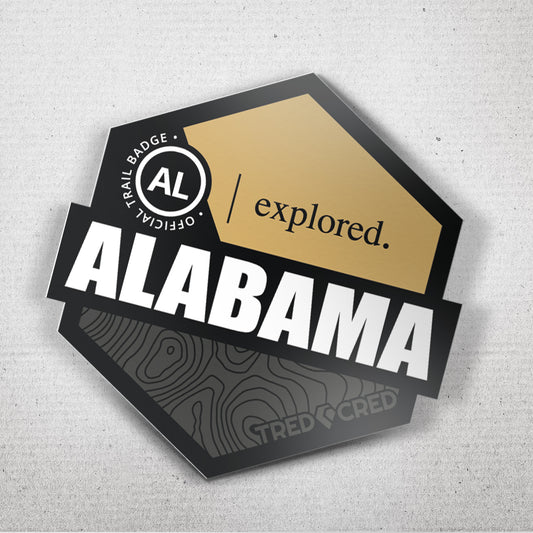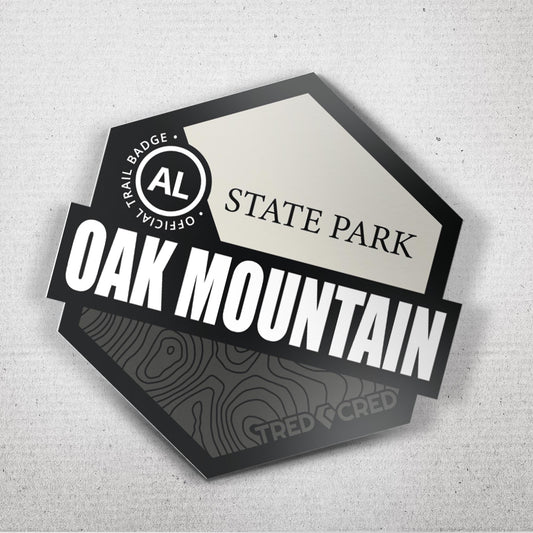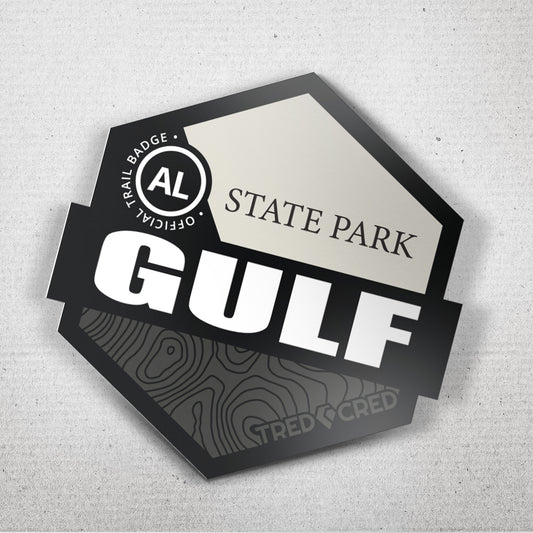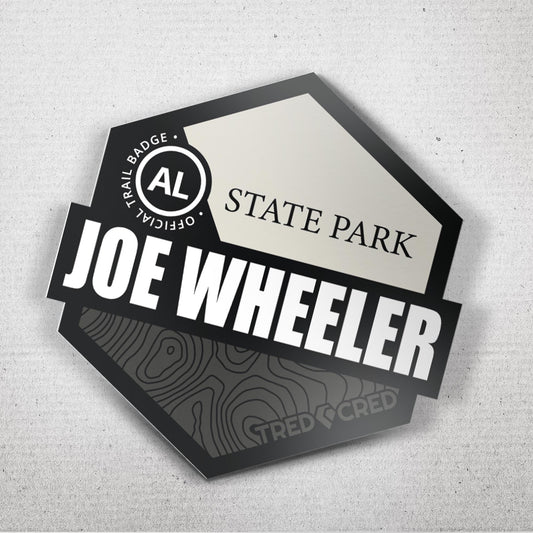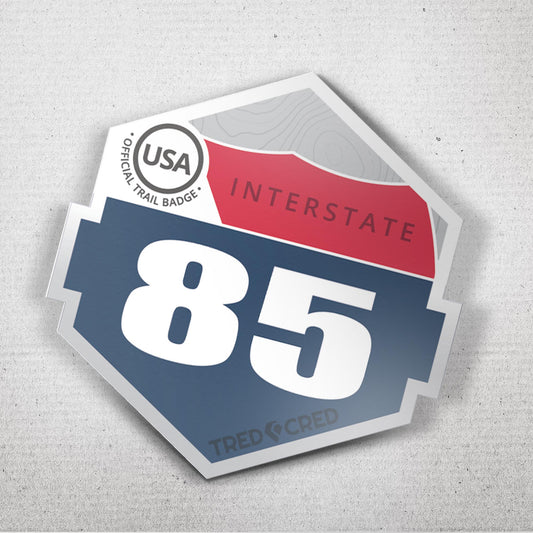Conquer the Toughest Offroading Trails near Morris Mountain ORV Park
Share
The Call to the Extreme
You’ve done the fire roads. You’ve sent it through the easy mud pits. You have a few stickers on your bumper that prove you're out there. Now, you’re looking for the real test. The adventure that changes your perspective—and maybe your oil pan.
Morris Mountain ORV Park in Delta, Alabama, isn’t just another patch of dirt; it’s a proving ground forged in the bedrock of the Appalachians. This is where the pavement ends and the true rock crawling challenge begins. Forget the 'Sunday Drive'—we're talking Level 4 and Level 5 trails that demand lockers, deep-tread quality tires, and absolute, white-knuckle focus. This isn't about playing; it's about pushing the limits of your built rig, your skill set, and your nerve to conquer the toughest terrain and earn your stripes.
If you're reading this, your rig is likely built for battle, and you're ready for the next epic challenge. Tred Cred is guiding you into the deep end: here is your guide to attacking, surviving, and dominating the most challenging rock crawling trails at Morris Mountain ORV Park.
The Level 5 Gauntlet: What You're Up Against
Every off-road park has a trail rating system, but at Morris Mountain, Level 4 and Level 5 aren't just numbers—they're warnings. They represent a head-to-head battle with solid rock, and the mountain is winning until you show up prepared.
Decoding the Damage Rating
For those unfamiliar with the Morris Mountain trail system, here is the quick, no-nonsense breakdown. You're aiming for the top:
- Level 1 & 2: Stock vehicles with AT tires. Gravel, dirt, small ruts.
- Level 3: Requires 33" tires, minor lift, and recovery points. Moderate ledges and deep ruts.
- Level 4: The demanding class. You need 36" tires, dual lockers or equivalent traction, and body armor. This is where you find sustained, technical crawling.
- Level 5: The extreme. 39" or larger tires, fully armored undercarriage, full roll cage required. This is for purpose-built rock buggies and highly modified Jeeps, tackling near-vertical shelves and massive, unavoidable boulders.
When you look at the park map, your eyes should lock onto the names that strike a little fear: The Punisher, Hammer Down, Scenic Overlook, and Los Primos. These aren't cute names; they’re prophetic.
The Punisher, for instance, is notorious for its sheer vertical rock shelf near the end. It's a true gatekeeper. If you don't have the approach angle, the articulation, and the confidence to hit it just right, you'll be backing down or getting winched up. It’s like a massive set of stone stairs—except each step is taller than your tire and angled to deny you.
I remember spotting a buddy of mine trying V-Notch for the first time. He had a great rig, but he underestimated the offset. The obstacle is a deep, narrow canyon—a true V-shape—that tests your clearance and articulation simultaneously. He went in too fast and leaned way over. For a tense minute, his rig hung there, teetering, before he expertly backed off, adjusted his line, and crawled up. It wasn't about horsepower; it was about precision. These trails demand that kind of respect.
Gear Check: The 'Built' Rig Requirements
If Level 5 is the battle, your built rig is the weapon. Stock vehicles simply can’t handle the sharp, relentless nature of the terrain here without taking serious body damage. Preparation isn't optional; it's the cost of admission.
Armor and Traction: Your Non-Negotiables
If you're serious about taking on the top trails, you need two things above all else: armor and traction. Your vehicle needs to be able to take a serious hit without failing.
- Dual Lockers: You need to be able to lock both the front and rear differential to send power equally to all four wheels. When one tire is hanging in the air over a ledge, the locker is what turns your rig from a 4x4 into a truly resilient rock-climbing machine.
- Full Body Armor: This means robust rock sliders that can hold the entire weight of your vehicle when it slides off a ledge. You need skid plates protecting your oil pan, transmission, and transfer case. These aren't accessories; they're structural life-support.
- Winch & Recovery Kit: A minimum 10,000lb-rated winch is your lifeline. Pair it with a quality kinetic rope, a snatch block (for doubling your pulling power), and an essential tree saver. On a Level 5 trail, your winch isn't just for getting you out; it’s for helping your off-road family out.
I once saw a rig lose a rear driveshaft attempting the first shelf on Los Primos. The driver had the right tires, but skimped on the axle truss. The torque on the obstacle was like a massive vise grip. If he’d had a fully built axle assembly, he would have cleared it. Instead, his weakness became the trail’s victory. The lesson is etched in steel: if you build it, build it tough. Don't let a cheap part cost you a full day of wheeling.
The Art of the Crawl: Line Selection & Spotting
Once you’ve got the hardware, you need the human software. Rock crawling on these technical trails is a slow, strategic dance. It is 10% throttle and 90% brain. The hardest part of the crawl isn’t the obstacle itself; it’s choosing your line and trusting your spotter.
Precision is Power
On a trail like the Scenic Overlook, you’re often dealing with off-camber sections—parts where the rig is tilted sharply to the side. Here, the biggest mistake is using too much throttle. When you hit the gas, your vehicle shifts its weight and can suddenly turn an uncomfortable tilt into a devastating rollover. The key is slow and smooth. Think of your throttle as a volume knob, not an on/off switch. You want to creep, finding the traction slowly, letting the engine and your lockers do the heavy lifting.
The trick of line selection is learning how the rock wants to handshake your tire. Instead of going over the tallest part of a boulder (where you risk hanging up your differential), often the best line involves hugging the high side, or placing your tire just right to use the rock as a ramp. You’re not fighting the rock; you’re persuading it. It takes practice, but when you nail a complex sequence, it’s one of the most rewarding moments in off-roading.
The Eyes of the Tribe
On Level 5 terrain, you cannot do it alone. Your spotter is your eyes, your engineer, and your most trusted confidant. Their communication needs to be clear, concise, and absolutely unwavering. At Morris Mountain, you’ll be in sections where the ledge in front of you completely blocks your view of the trail surface.
I once spotted a driver named Mark through a particularly nasty rock garden—a section of the trail nicknamed "Tank Traps." I was telling him "Driver's left, driver's left!" but he was fixated on a small ledge on the right. He couldn't see the refrigerator-sized boulder about to slam into his axle. I had to shout "STOP! NOW! Mark, trust me, driver’s left NOW!" He paused, moved two inches left, and cleared the boulder perfectly. The tension was thick, but that level of trust between driver and spotter is what turns a solo adventure into a community success story. Never run a Level 4 or 5 trail without a reliable spotter.
Post-Trail Prep: The Off-Road Family Ritual
You made it. Your rig is muddy, your body is sore, and your passion is renewed. The most important final step is the ritual of the post-trail check. This is how we ensure our durable rigs stay that way and how we show respect to the off-road family.
Immediate Check-Ups
Before you hit the pavement, you need to check these vital points:
- Tires and Wheels: Check for bead leaks (especially if you aired down low), bent wheel lips, and any sidewall tears.
- Fluids: Look for dark spots under your rig. Did you leave a small trail of oil or gear fluid on that last big ledge? Check your differential and transfer case seals for leaks.
- Steering and Suspension: Check tie rods and drag links for bends, and inspect shock bodies for damage. A quick glance can save you a highway disaster.
- Bolt Check: The constant hammering of rocks can loosen bolts. Take a few minutes to quickly check all your major mounting points.
Earning Your Stripes
The final step is cementing the adventure. Rock crawling at Morris Mountain is a monumental achievement, and you’ve earned the bragging rights. Now it’s time to rep your rig right.
Slap that Morris Mountain patch or sticker onto your rig. When other wheelers see that Tred Cred patch proudly displayed next to the official trail logo, they know you're not a spectator—you're a participant. You are part of the tribe that respects the challenge, values the quality build, and lives for the journey.
---
Go Conquer the Rock!
These trails are the proving ground. They test your build, your nerve, and your commitment to the off-road family. When you drive off a Level 5 trail at Morris Mountain, you aren't just leaving a mark—you're carrying a story of grit, skill, and resilience.
You know the challenge, you know the gear, and you know the objective. Get your recovery kit dialed in, find a trusted spotter, and drive with precision. Go there, conquer the rock, and come back ready to rep the hardest trails. The epic journey is waiting. Are you ready to send it?
Community Challenge: What is the hardest Morris Mountain obstacle you've conquered with your rig? Drop a comment below and tell the tribe your strategy for getting past The Punisher!


